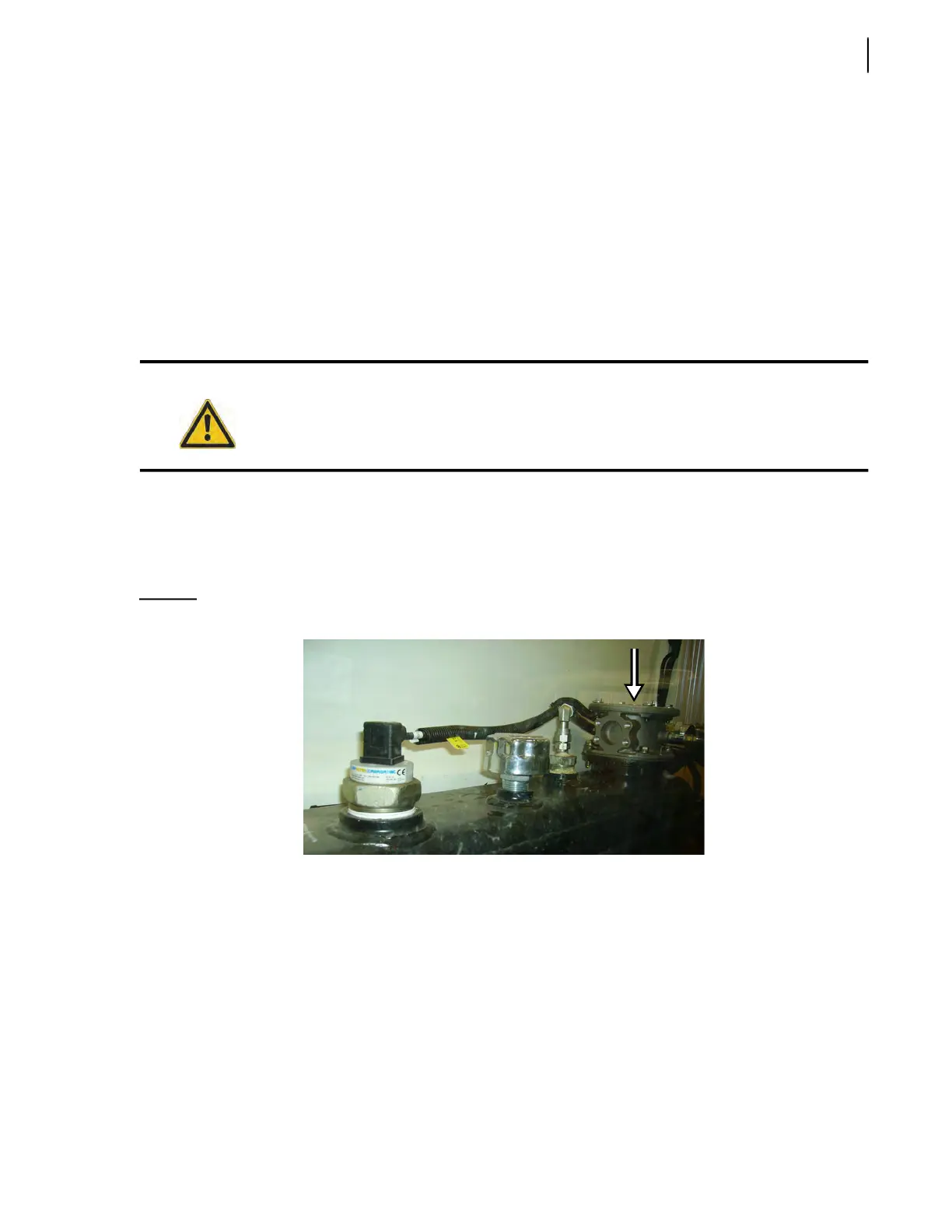Hydraulic System 105
6. Crank the engine repeatedly — about five times — without letting it start in order to fill the
suction hose and the pump with hydraulic oil and to push the air back into the tank.
7. Start the engine.
You can slowly raise the engine RPM only after 5 minutes. When you raise the RPM, always
make sure that the pump does not make excessive noise.
8. Before putting the vehicle back in service, recalibrate the system pressures.
Inspecting the Hydraulic Tank
Verify that the oil in the tank is clean (not colored) and always at the appropriate level.
To inspect the hydraulic tank:
1. Lock out and tag out the vehicle (see Locking Out and Tagging Out the Vehicle on page 20).
2. Clean the strainer and replace the filter element inside the tank after the first 50 hours of service
(see Cleaning the Strainer on page 117 and Replacing Filter Elements on page 120).
Figure 5-14
Filter housing element
For more information on the maintenance schedule, see Preventive Maintenance Chart on
page 24.
3. Make sure that the filler cap (see Figure 5-15) is not obstructed and works properly.
4. Make sure that the hydraulic oil is clean (not colored) and at least ¾ full on the oil level gauge
(with all cylinders retracted) [see Figure 5-16].
The complete system requires between 50 and 60 gallons of oil.
Caution!
Maximum temperature for hydraulic oil is 77 °C (180 °F).
